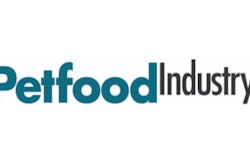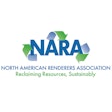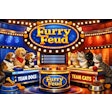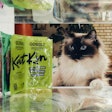
Labeling pet food as made in a human-grade or federally inspected facility may appeal to pet owners who want to feed their cats and dogs as they feed themselves and ensure safety. Specific laws and regulatory definitions define the use of these human-grade pet food claims, and failure to meet these standards can lead to problems.
This article is part of a Petfood Industry series that explores labeling issues.
Other articles in the series:
Pet food labels: 3 new product trends at SuperZoo
For example, no matter how thoroughly inspected that pet food may be, those products can never be labeled as safe for human consumption, or implied to be so.
“FSIS would be concerned about pet food bearing labeling that purports the product as edible for human consumption,” Veronika Medina, USDA Food Safety and Inspection Service (FSIS) public affairs specialist, told Petfood Industry. “Pet food, by definition, is considered inedible [9 CFR 325.11 (d) (1)], therefore, all pet food produced in a USDA facility is considered inedible for humans, and FSIS certifying pet food does not indicate that it meets the same standards as human food.
USDA-certified versus non-certified pet food labeling
USDA-regulated facilities can produce two types of pet food: certified pet food and non-certified pet food, said Medina, and that is reflected in their labeling.
“Certified pet food is inspected and is marked with the USDA tombstone legend, which states that it was packaged under the continuous inspection of USDA,” she said.
However, that certification mark is different from the “Inspected and Passed” stamps used on meat, poultry and egg products that FSIS inspects for human consumption, she noted.
The other type of pet food made in USDA-inspected facilities is classified as non-certified. This non-certified pet food is not inspected and does not receive the USDA tombstone legend, she said. Nevertheless, it still must follow USDA labeling requirements.
When a pet food labels itself as made in a USDA-certified facility, it may imply to consumers that the same FSIS inspectors who monitor human food scrutinized the pet food, David Dzanis, DVM, PhD, CEO of industry consultancy Regulatory Discretion Inc., told Petfood Industry.
“That sort of claim is considered false and misleading by most regulators,” he said. “USDA-FSIS does not inspect or certify pet products. The only exception is a voluntary inspection program under 9 CFR 355, but that is very rarely used by pet food companies and does not qualify a pet food as human grade, anyway.”
AAFCO definition of human-grade
The Association of Feed Control Officials (AAFCO) now has both a definition and guidance for “human-grade” pet food labeling, said Dzanis.
“Briefly, it requires extensive documentation to prove each ingredient is suitable for human consumption, and the product itself is made in a licensed human food facility that meets good manufacturing practices for human food production under [federal regulation] 21 CFR 117,” he said.
The following definition was included in the 2017 AAFCO Official Publication.
Human Grade: Every ingredient and the resulting product are stored, handled, processed and transported in a manner that is consistent and compliant with regulations for current good manufacturing practices (cGMPs) for human edible foods as specified in 21 CFR 117.
In his Petfood Industry column, “AAFCO to set pet food ‘human-grade’ claim standards,” Dzanis wrote that, under AAFCO’s definition, a pet food labeled as “human-grade” needs more than to be produced in a USDA-inspected facility. Instead, there must be documentation that the entire facility is Food and Drug Administration compliant.
Benefits of human-grade pet food certification
While regulatory issues complicate “human-grade” claims on pet food labels, the trend towards humanization of pets and their food may lead to more pet food brands striving to earn the USDA tombstone legend.
Recent recalls of wet pet foods have led to a surge in consumers expressing concern over these products, Adrian Pettyan, CEO and founder of Caru Pet Food, told Petfood Industry.
"There's a real concern about standards and trusts in products, much like the melamine crisis," said Pettyan. "Humans are saying, I want to feed my dog the same as what I eat, and that means I want to have the trust that's in line with human-grade standards."














